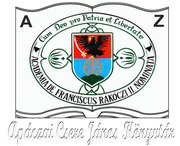Please use this identifier to cite or link to this item:
https://dspace.kmf.uz.ua/jspui/handle/123456789/4646Full metadata record
| DC Field | Value | Language |
|---|---|---|
| dc.contributor.author | Sikora Emőke | hu |
| dc.contributor.author | Kiss Adrienn | hu |
| dc.contributor.author | H. Göndör Zsuzsa | hu |
| dc.contributor.author | Pekker Péter | hu |
| dc.contributor.author | Kristály Ferenc | hu |
| dc.contributor.author | Szőri Milán | hu |
| dc.contributor.author | Rágyanszki Anita | hu |
| dc.contributor.author | Viskolcz Béla | hu |
| dc.contributor.author | Bela Fiser | en |
| dc.contributor.author | Fiser Béla | hu |
| dc.contributor.author | Фішер Бейло | uk |
| dc.contributor.author | Vanyorek László | hu |
| dc.date.accessioned | 2025-01-29T14:45:40Z | - |
| dc.date.available | 2025-01-29T14:45:40Z | - |
| dc.date.issued | 2020-02 | - |
| dc.identifier.citation | In Reaction Kinetics, Mechanisms and Catalysis. 2020. Volume 129. pp. 95-106. | en |
| dc.identifier.issn | 1878-5190 (Print) | - |
| dc.identifier.issn | 1878-5204 (Online) | - |
| dc.identifier.other | https://doi.org/10.1007/s11144-019-01705-7 | - |
| dc.identifier.uri | https://dspace.kmf.uz.ua/jspui/handle/123456789/4646 | - |
| dc.description.abstract | Abstract. Nitrogen-free multi-wall carbon nanotubes (MWCNTs) and N-doped bamboo-like carbon nanotubes (BCNTs) were synthesized by using catalytic vapor deposition (CVD) and used as catalyst support materials. Pd, Rh, Ru, and Ir have been deposited onto the nanotubes to achieve metal/nanotube catalysts. The catalytic activity of the samples was fne-tuned by changing the type of support. BCNT supported Pd and Rh (Pd/BCNT, Rh/MWCNT) catalysts were found to be the most active for liquid phase hydrogenation of octadecene amongst these samples. The initial olefn hydrogenation rate of the Pd/BCNT sample was slightly higher than the corresponding MWCNT-supported catalyst. Based on the hydrogenation reaction, the performance of these catalyst had been ranked as follows: Pd/BCNT ≈ Rh/MWCNT>Pd/ MWCNT>Rh/BCNT> >Ir/MWCNT>Ru/BCNT>Ir/BCNT>Ru/MWCNT. The structural properties of chemisorbed Pd on MWCNT and N- BCNT were also characterized by means of computational chemical methods in order to shed some light on the nature of metal binding properties of N-doped and undoped surfaces. The calculations shown preference towards the edges of the surfaces which is in good agreement with the experimental fndings. | en |
| dc.description.sponsorship | This research was supported by the European Union and the Hungarian State, co-fnanced by the European Regional Development Fund in the framework of the GINOP-2.3.4-15-2016-00004 project, aimed to promote the cooperation between the higher education and the industry. The GITDA (Governmental Information-Technology Development Agency, Hungary) is also gratefully acknowledged for allocating computing resources used in this work. The authors would like to thank Prof. Svend Knak Jensen (Aarhus University) for his help on various technical issues related to the calculations. | en |
| dc.language.iso | en | en |
| dc.publisher | Akadémiai Kiadó | en |
| dc.relation.ispartofseries | ;Volume 129. | - |
| dc.rights | Attribution-NonCommercial-NoDerivs 3.0 United States | * |
| dc.rights.uri | http://creativecommons.org/licenses/by-nc-nd/3.0/us/ | * |
| dc.subject | Carbon nanotubes | en |
| dc.subject | Catalyst | en |
| dc.subject | BCNT | en |
| dc.subject | MWCNT | en |
| dc.subject | Hydrogenation | en |
| dc.title | Fine-tuning the catalytic activity by applying nitrogen-doped carbon nanotubes as catalyst supports for the hydrogenation of olefins | en |
| dc.type | dc.type.collaborative | en |
| Appears in Collections: | Fiser Béla | |
Files in This Item:
| File | Description | Size | Format | |
|---|---|---|---|---|
| Fiser_et_al_Fine_tuning_the_catalytic_activity_by_applying_2020.pdf | In Reaction Kinetics, Mechanisms and Catalysis. 2020. Volume 129. pp. 95-106. | 816.17 kB | Adobe PDF | View/Open |
This item is licensed under a Creative Commons License





